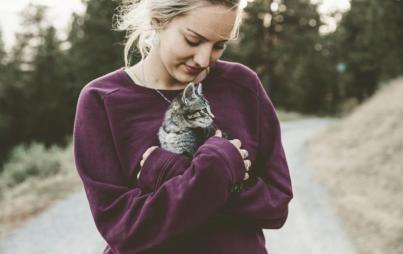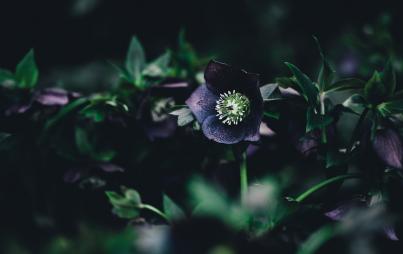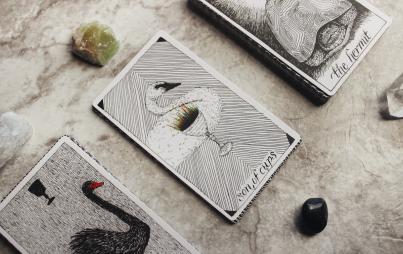
What can we do to care for our skin of all colors?
We may like to wax poetic about how self-care looks different for everyone, but in some cases, it’s pretty universal. Take extreme weather, for instance.
Self-care can look like a lot of things, but when you are dealing with soaring temperatures and direct sunlight, your direct needs become very obvious and immediate: stay hydrated, protect your skin, and keep your internal temperature under control.
It’s much easier to recognize these needs because the consequences can be visible and life-threatening. However, they are often the cause of less-visible issues, too.
Different issues can manifest as a result of these needs not being met. For instance, did you know that anxiety can be linked to dehydration, as well as headaches, dizziness, and irritability? It’s easy to forget. Another easily forgettable issue that many of my melanated friends may forget is that even though “Black don’t crack,” it can get skin cancer — especially acral letinginous melanoma (ALM).
Skin cancer seems like a white person’s disease, and it absolutely does affect pale skin more often (1 in 50 versus 1 in 200 for Latinx and 1 in 1,000 for African Americans) but darker African American complexions are disproportionately affected by it. What do we mean by that? The five-year survival rate after diagnosis for is 73 percent — versus 91 percent for white Americans. That means that skin cancer in black skin is less likely to be caught in the early stages due to lower likelihood to wear sunscreen, lack of access to medical care, and racial bias within the medical industrial complex, as well as other factors.
When you think about that, it’s yet another way that skin care and health are related to social justice and accessibility.
What can we do to care for our skin of all colors? Here are some self-care tips catered to answer common questions when it comes to staying safe in the sun:
1. How Does SPF Even Work?
First of all, it’s important to understand how SPF works before you purchase an effective sunblock. Theoretically, someone can withstand 20 minutes of direct sun exposure before they begin to experience a sunburn. So, SPF 15 theoretically lets you stay out for 5 hours in the sun, SPF 30 ten hours, and so forth. The problem with this is that sunscreen breaks down over time as it is exposed to UV rays, so it is important to re-apply a minimum of every two hours and every hour if you are exposed to water — which includes sweating profusely. To top that off, you want a sunscreen that fights both UVA and UVB rays.
It can be tricky understanding the distinction, luckily there are a few guides that spell it out. Read more about it with this handy-dandy SPF breakdown by Ravishly contributor Kelly Davio.
2. How Can I Address My Specific Needs?
You can’t begin to fix a problem until you know what it is, so narrow down your needs. Will you be in the water? You should focus on a waterproof sunblock for that and make sure that you reapply after you dry off. Sensitive skin? Perhaps looking for a physical/mineral sunscreen instead of a chemical sunscreen is the best option, as these sit on top of your skin rather than being absorbed.
While natural ingredients like nut oils and fruit extracts may sound nice, they don’t do much and can just be used as filler as well as having negative reactions with your skin when exposed to heat and prolonged light.
If you have kids, their sensitive skin has different needs than your adult skin. Make sure to be aware of what is safe for children of their age and purchase accordingly.
3. What Do I Grab If I Don’t Know What To Buy?
When in doubt, spend your money on broad spectrum, waterproof sunblock. Broad spectrum blocks both types of UV rays (UVA and UVB) and waterproof sunblock will give you a slight barrier against sweat, as well as making it your go-to sunblock for when you find yourself poolside or beach bound.
4. What Else Should Be In My Bag?
If you are going to spend time in the sun, a good sunblock shouldn’t be your only protection. Light-reflective, pale colors are a good bet for clothing as well as a hat to keep the sun off of your face and shoulders.
Don’t forget to pack a lip balm with SPF, and if you know that you fry worse than others, pack two different kinds of sunscreen — one for basic protection and one with a higher SPF for your nose, cheeks, ears, back of neck, shoulders, and hands… the places where common melanoma growths are most often found. Protect your eyes as well with sunglasses that provide UV protection.
Make sure to stay hydrated! Bring a big bottle of water to keep yourself from getting dried out. It isn’t a bad idea to keep after-sun skincare in your bag, as well, to immediately combat potential burns and replenish moisture.
5. Ok… What The Hell Is That On My Back?
Even the most prepared folks still find themselves with odd growths. Skin cancer still happens in the most avid of sunscreen wearers. If you find a flat or raised growth with mis-shapen edges, go to a doctor. If something has popped up suddenly and doesn’t just look like your run of the mill zit, get it checked out. The Cancer Society has an ABCDE of skin cancer for you to remember and self-examine:
- A is for Asymmetry: One half of a mole or birthmark does not match the other.
- B is for Border: The edges are irregular, ragged, notched, or blurred.
- C is for Color: The color is not the same all over and may include different shades of brown or black, or sometimes with patches of pink, red, white, or blue.
- D is for Diameter: The spot is larger than 6 millimeters across (about ¼ inch – the size of a pencil eraser), although melanomas can sometimes be smaller than this.
- E is for Evolving: The mole is changing in size, shape, or color.
These guidelines are suggestions for moles, but cancer does not only show up in these places. If you are darker skinned, be aware of dark spots which can appear on the palms of your hands, bottoms of your feet, and in your nailbeds — wherever the least melanin is on your body, as it is the most susceptible to UV damage.
As someone who has lost multiple loved ones of all ages to various forms of cancer, I am frequently reminded that we only have one body and one life. How you choose to enjoy it is one thing, and I will never health- or concern-troll anyone for what they put into their bodies or how active they are. However, when it comes to something as simple as sunscreen, it’s an easy process that can be introduced as you dry off from the shower. Protect yourself and your loved ones; the ozone is only getting thinner and the rays more intense. By doing this yourself, you can teach your little ones preventative cancer care like this, and you prepare them with realistic expectations of the world which we are handing off to them.








